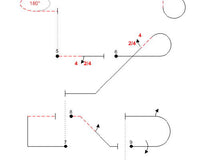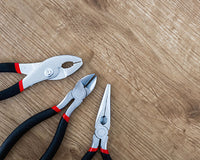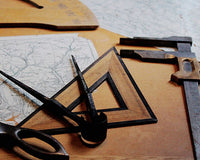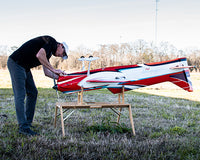This article is written by our valued CK Aero contributor George Asteris
I’ve been asked to share my experience with YS engines and the procedures I use in order to run and maintain the engines. Let me note that I fly YS engines exclusively and have done so for the past 30 years. One of the advantages of YS that I like is the amount of flying time I get. On a 20 oz. tank, I can fly almost 2 full sequences of the Masters pattern.
Setting Up a New YS Engine
The YS of today is more durable and much friendlier to run than in the past. You can pretty much take it out of the box, put it on the engine stand, and it will run without issues. Design changes over the years have made the engine more desirable.
Because of the increase in the stroke, it has given the engine the ability to turn bigger propellers at a lower RPM. The bore has not changed since the 160 DZ. The increase in CCs is all in the stroke. I don’t know if this is true of the 185 as I don’t have one.
When I receive a new engine, I mount it on an engine stand and attach an exhaust system that I would use in the airplane. Back pressure of the exhaust system is critical to needle valve setting. Now, it’s time to mount a propeller. On my 170 & 175’s, I run a 19-11 for the engine “break-in”. This propeller is lighter than the one I normally fly with which is a 20-10.5 or 21-10.
I then attach the fuel system. At this point, I would like to mention that some types of fuel may not work in the YS engines. The one that I know work and I’ve had good success with is Cool Power-Heli Blend 20% & 30%. The percentage of nitro for me is dependent on engine temperature and humidity. Here in South Carolina, the Winter’s temperatures are usually in the 50-60’s. At these temperatures, you will not need any more than 20% nitro. In the Summer, you will usually need 30% nitro because of the high temperatures and humidity. Also, you will need a YS clunk in the fuel tank.
Starting Procedures
Open the needle valve four (4) full turns from the closed position and open the throttle valve to full; hand turn the engine and you will see the fuel travel up the fuel line, through the pump, and into the carburetor to the injector. When the fuel reaches the injector, the engine is ready to start.
If running the glow version, I highly recommend a delay glow driver. If the glow plug is lit when you try to start the engine, it will kick back and with a soft mount in the airplane, it will most likely hit the cowl. The ignition engines do not have this issue.
To start the engine close the throttle, light the glow plug, and start the engine. I run the engine at 2500 RPMs without adjustment (you shouldn’t need any at this point). I run a 16 oz. tank of fuel through the engine at that RPM because if you try to go to full throttle with a new engine, you take the chance of possibly seizing the connecting rod to the crank pin.
On the 2nd tank I will go to full throttle with the needle valve open four (4) full turns. At this needle valve setting, the engine will be running on the rich side. If it continues to run at four (4) full turns open, I will leave it there until I run another 16 oz. through. Sometimes they will not run at four (4) full turns rich as they will shut off. If that occurs, I will turn the needle valve in ¼ turn and restart. If it still shuts down, I will go another ¼ turn in until the engine continues to run.
After the second tank, I will now adjust the high end needle valve for maximum RPM and then back the needle valve off until engine drops 300 RPM. I will run another tank at that setting. I then start the engine and check the idle on the next tank. The thing to remember is that the pump adjustment will affect the idle and the midrange on the engine. I found out that most of the time, the pump doesn’t need to be adjusted. You will only need to adjust the pump if the idle is too rich or lean. The adjustment, if needed, is reverse of the needle valve (in is rich; out is lean). Being a little rich on the idle is better than being lean. If the bottom end is too lean, you take the chance of detonation in transition from idle to full throttle. I will not go back to full throttle and check high end needle valve to make sure that the adjustment is correct.
At this point, the engine is ready to mount in the airplane. With the change in propeller size from the 19-11 to the 20-10.5, you may find that you have a slight change in the needle valve setting. It’s been my experience that the setting on the engine stand and the setting in the airplane will be very close.
If you are going to adjust the needle valve with the engine in the airplane, remove the cowl. If you don’t, the engine will overheat and the needle valve setting will be unstable.
Also, in high temperatures, the engine can overheat in the air. The air coming in the front of the cowl needs to be redirected over the fins of the engine. The easiest way to do this is to use the foam that comes with the engine (in the box). Glue the foam to the sides of the cowl with contact cement. This will close the air gap between the engine and the cowl and direct the air over the engine fins. Some people think making the air inlet in front of the cowl bigger will also increase air flow. It doesn’t because you will lose velocity. The air needs to be directly over the engine.
Fly the airplane with the engine set on the rich side as it was set on the engine stand. You will always want to fly a little on the rich side as the engine will unload in the air.
If the engine setting is too rich when you pull vertical, the engine may shut off. Do not confuse this with a lean setting. If the engine is lean, it will sag in the vertical. Typically once the needle valve is set correctly, I have found that you never have to change it unless there is a dramatic change in temperature. Usually, the initial needle valve setting will last for some time. If you have to start changing the setting, you may have a mechanical issue.
Maintenance
After a flying session, I don’t do anything to the engine. However, I do empty the fuel tank. Reason being, I fly at least 2-3 times per week. If you fly at least that, it’s not necessary to put any after run oils into the engine.
If the engine is going to sit for a long period of time, I suggest strongly that you should run the engine dry and add a little after run oil.
To maintain engine from season to season, replace the bearings & piston ring. If you don’t replace those items, you take the chance of the bearings going bad and metal intrusion into the engine. This will compromise internal parts. Some people do not feel secure in doing this procedure but Richard Verano is available to do all maintenance.
One of the benefits of flying YS engines is that you can speak directly with the importer and service technician, Richard Verano. Richard has been working with YS for decades; he was the service technician when Futaba was the importer. Any problem that I’ve had with a YS engine I’ve discussed with Richard and come to a solution.
I’m always available to help anyone through this process.
-George Asteris











